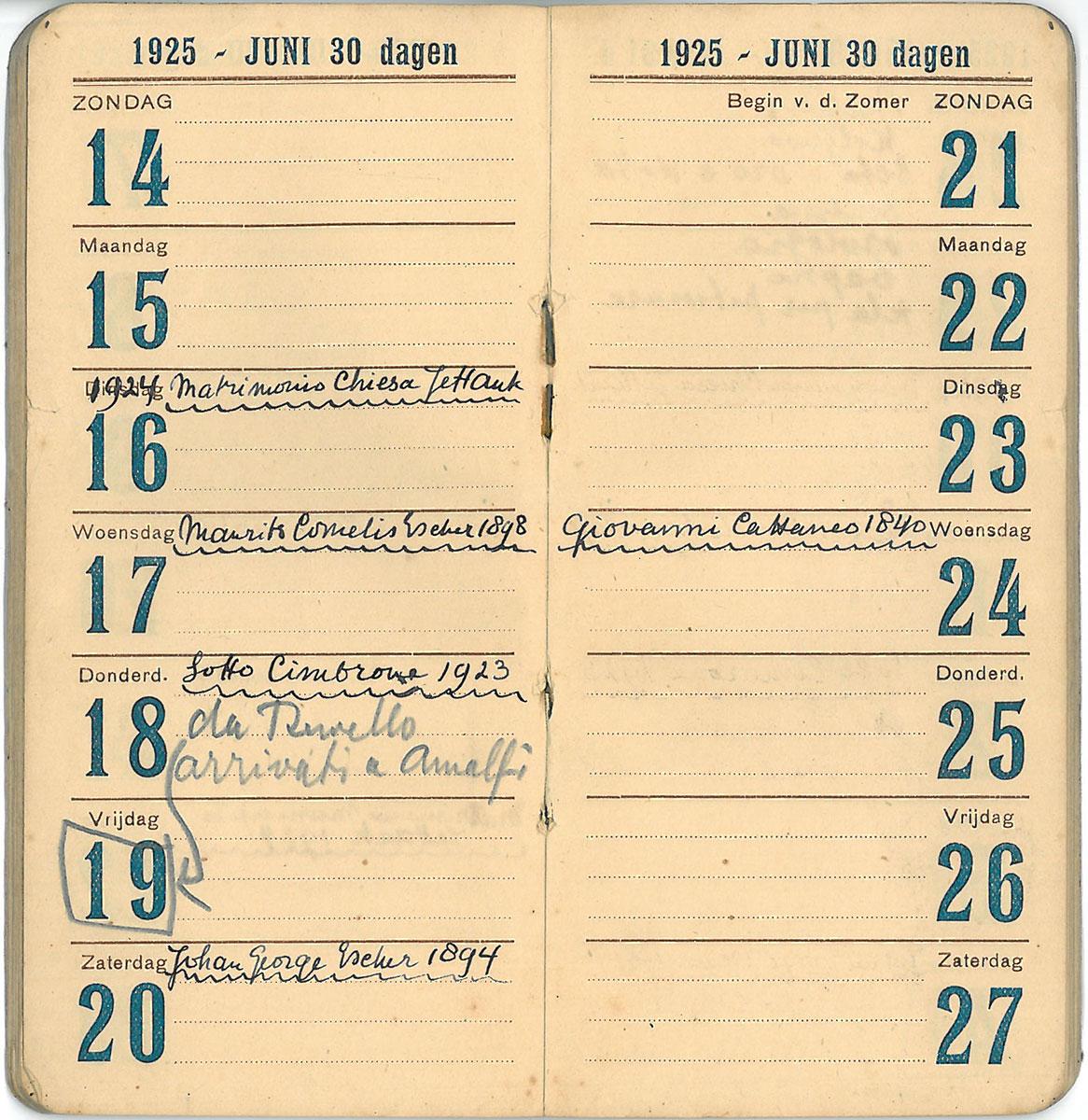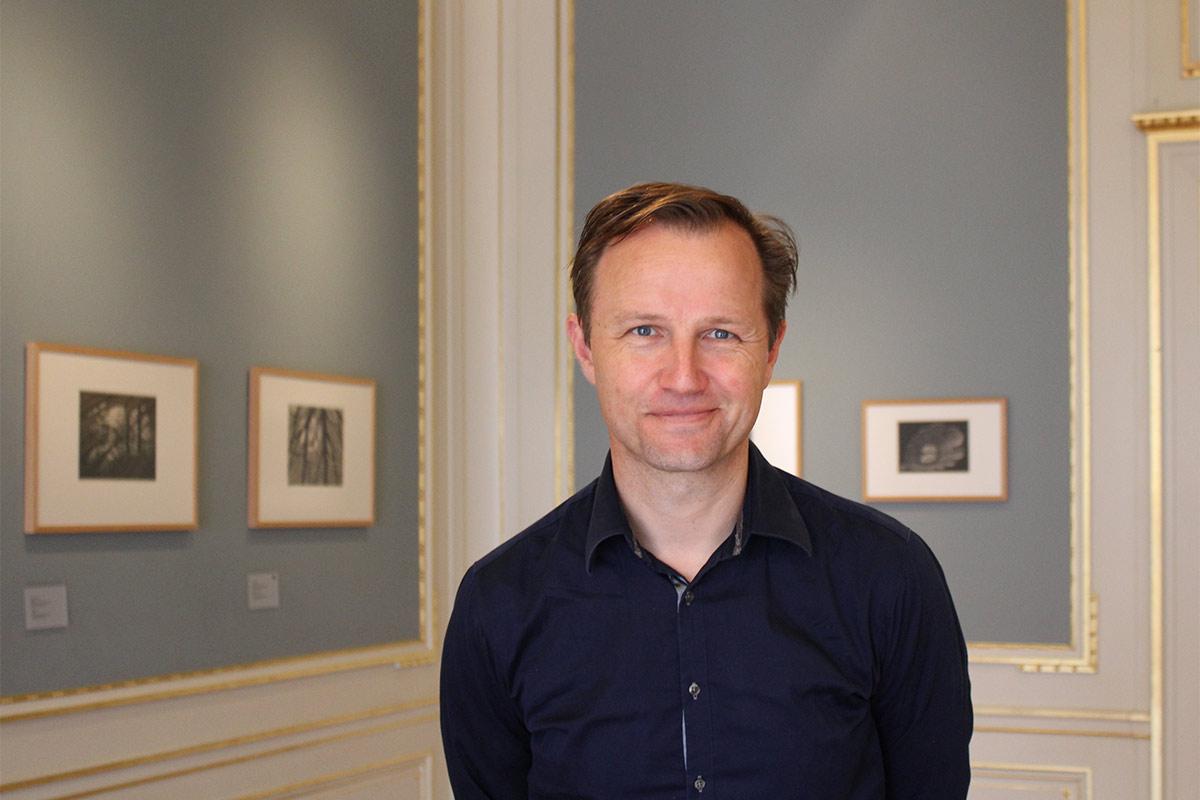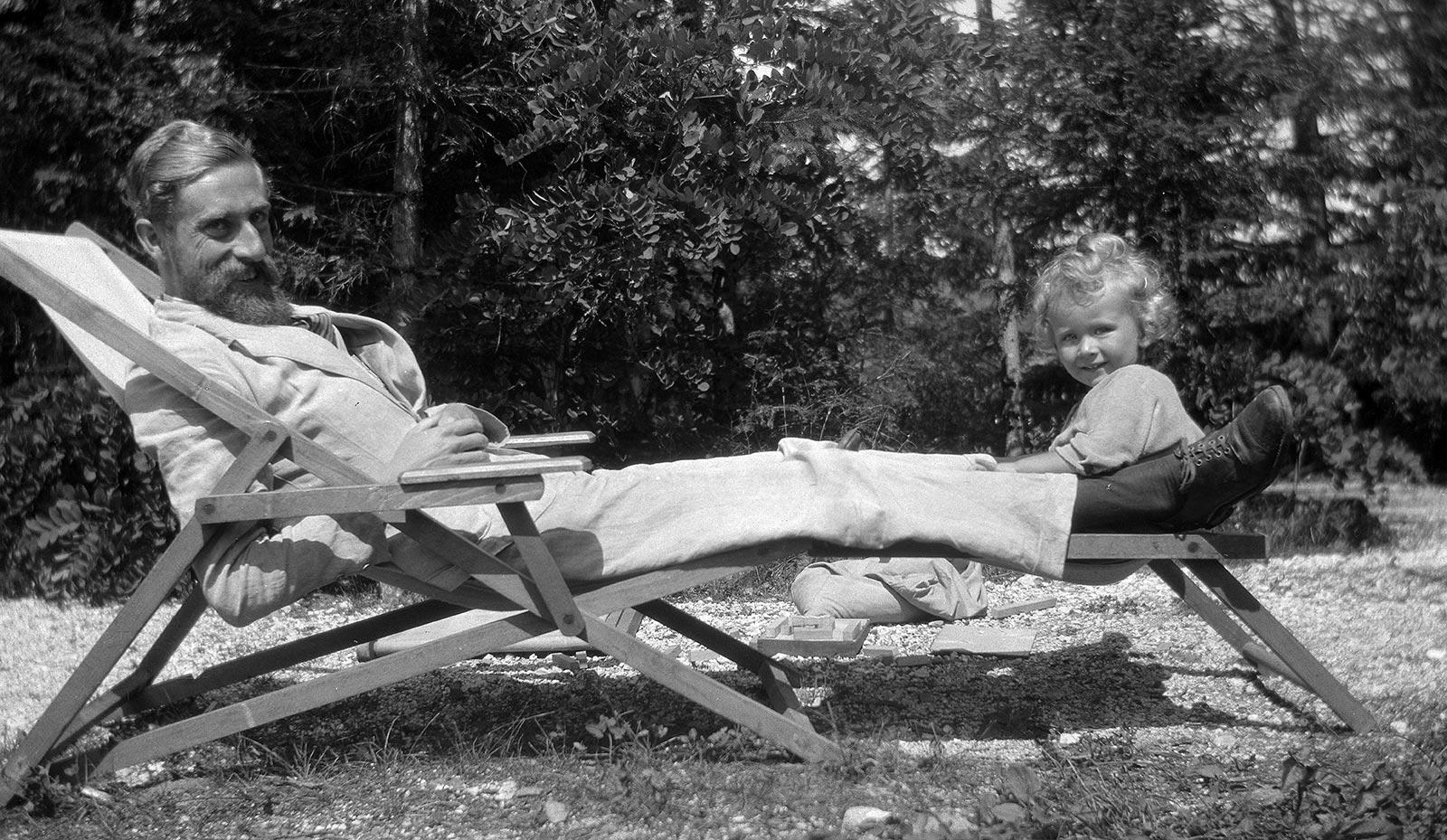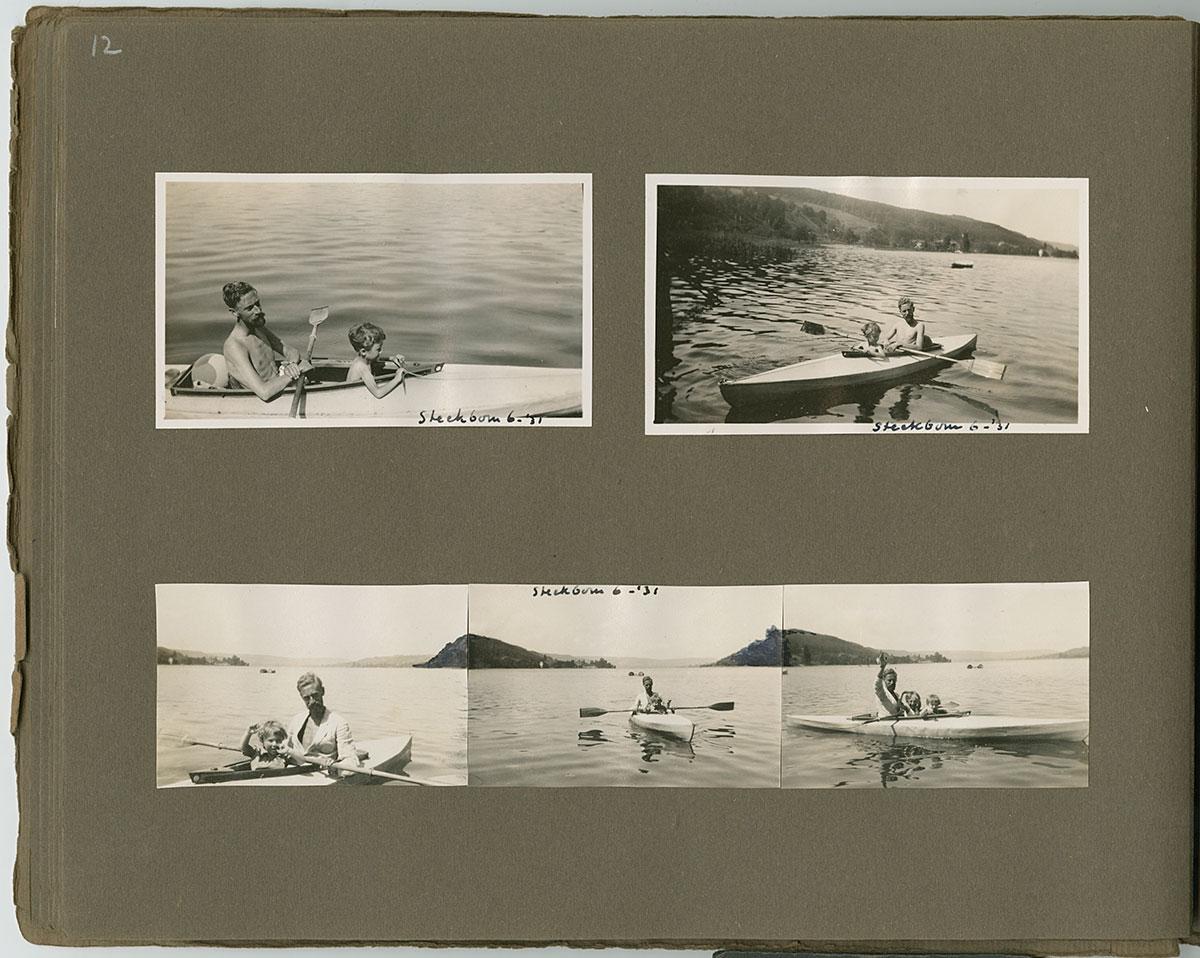

After their holidays with the Schiblers in Steckborn, the Escher family travelled to the Netherlands at the end of June 1931. Jette and the kids would stay until 1 September and Maurits until 18 September. He used these three-and-a-half months to enhance and broaden his technique. He visited the artist Fokko Mees, who taught him the possibilities of end-grain engraving with a chisel. Escher bought a burin with a magnifying glass to create this very detailed work. This magnifying glass was a linen tester, traditionally used in the textile industry. *
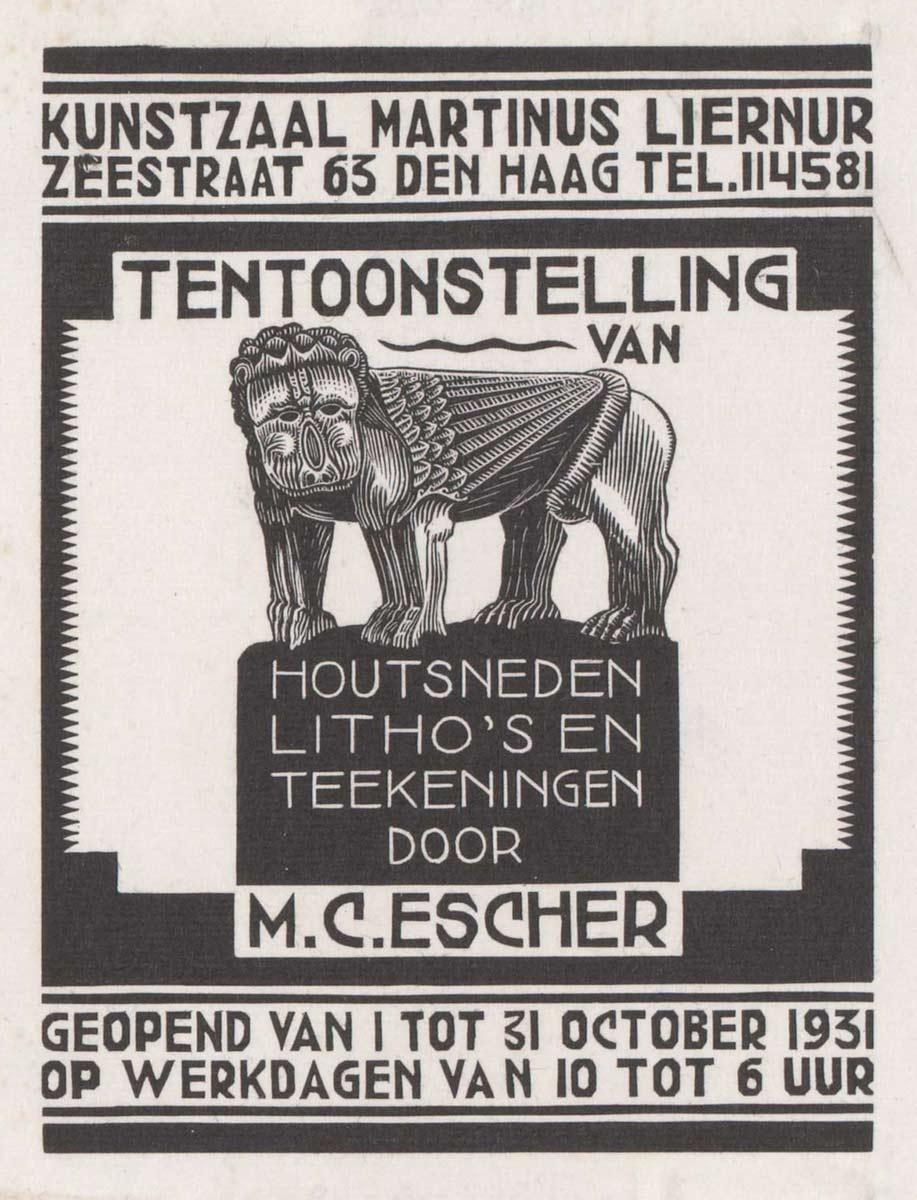
His first attempt was an invitation card for his exhibition at art dealer Liernur in the Hague. He used the lion at the Piazza Fontana Moresca in Ravello as an image. He had been there several times himself, and he would use the lion again later, in a lithograph. Newspaper Het Vaderland wrote about it:
‘A skilfully engraved little lion, with archaic allure, invites us to see this exhibition; and anyone accepting this invite will not be disappointed.'
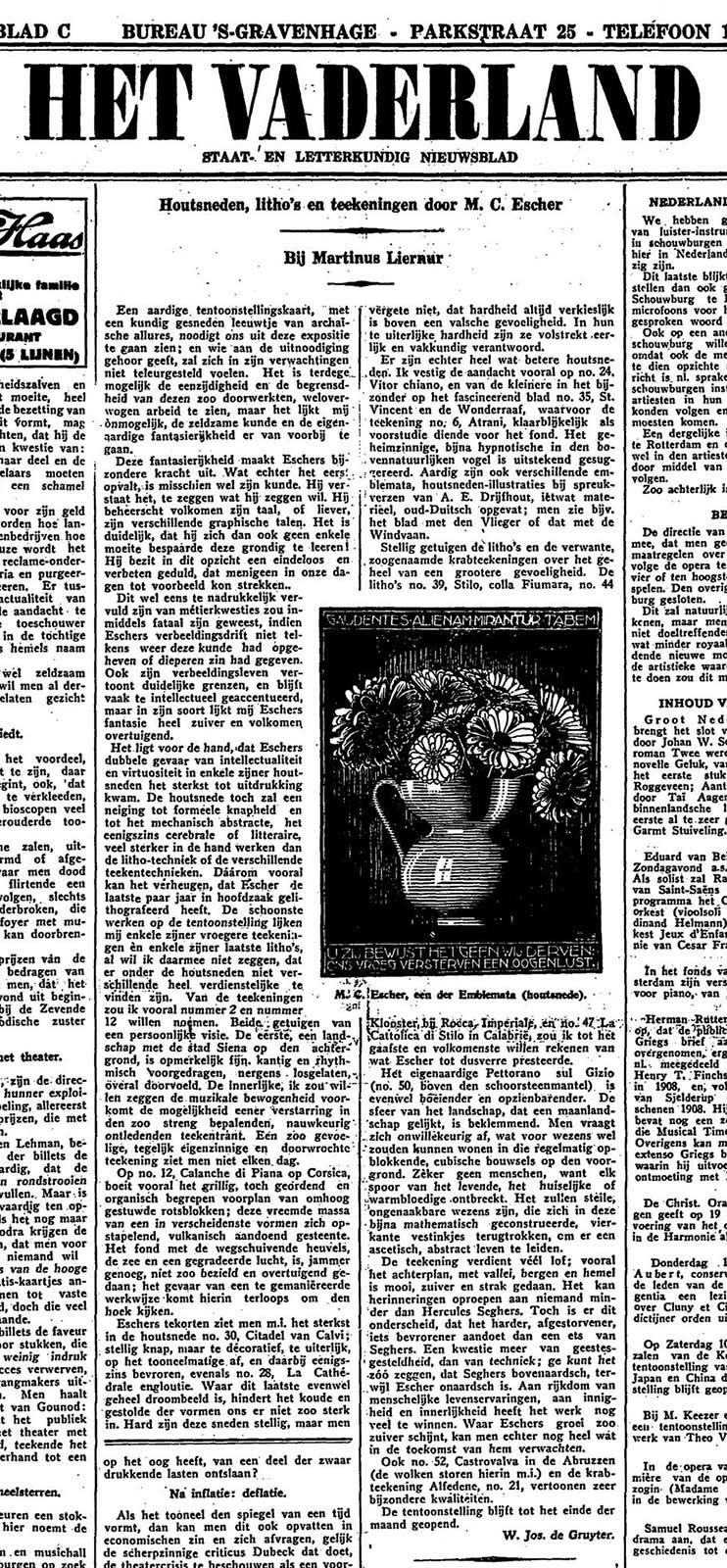
Source
[*] Wim Hazeu, M.C. Escher, Een biografie, Meulenhoff, 1998, page 147-148
More Escher today

